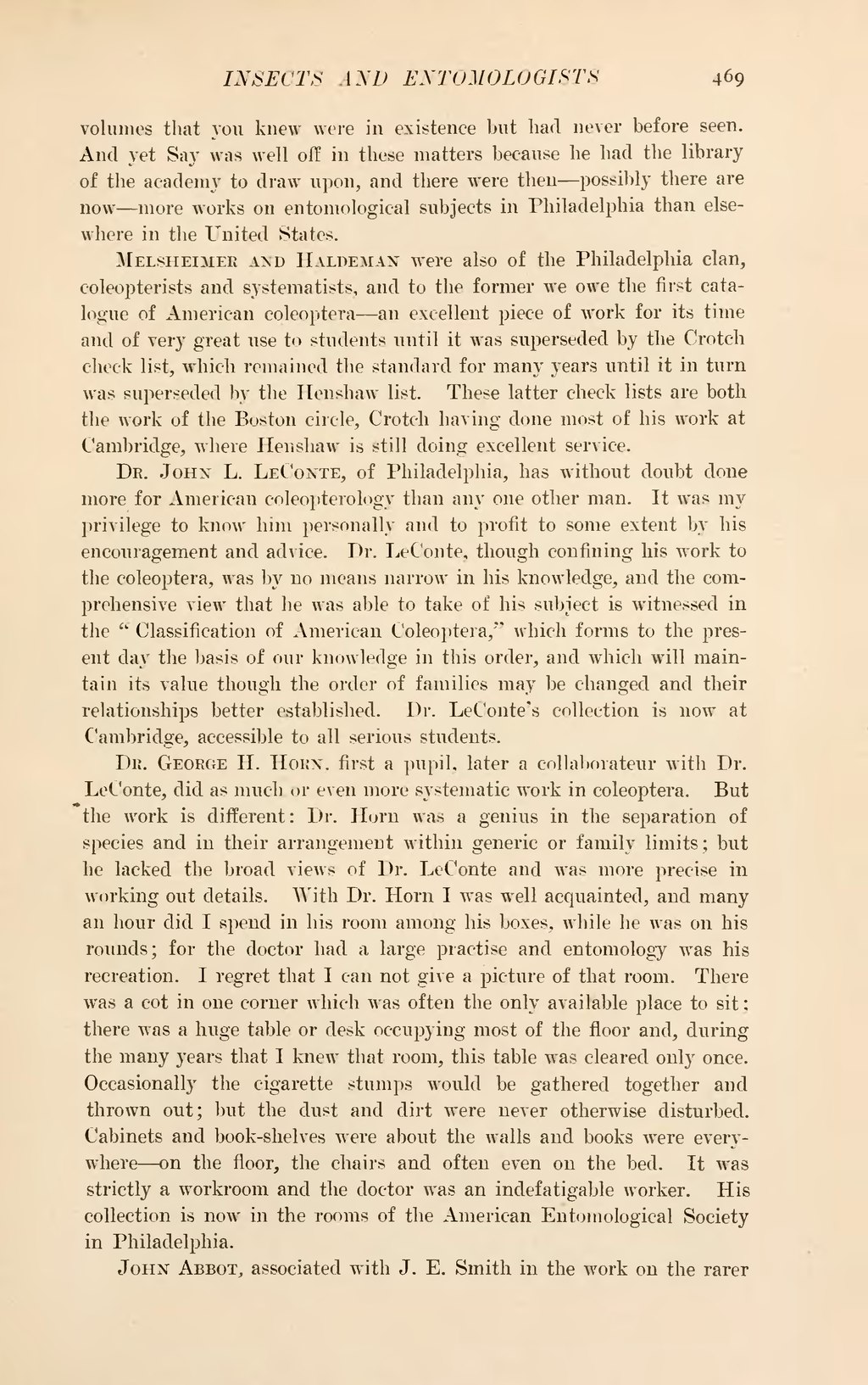volumes that you knew were in existence hut had never before seen. And yet Say was well off in these matters because he had the library of the academy to draw upon, and there were then—possibly there are now—more works on entomological subjects in Philadelphia than elsewhere in the United States.
Melsheimer and Haldeman were also of the Philadelphia clan, coleopterists and systematists, and to the former we owe the first catalogue of American coleoptera—an excellent piece of work for its time and of very great use to students until it was superseded by the Crotch check list, which remained the standard for many years until it in turn was superseded by the Henshaw list. These latter check lists are both the work of the Boston circle, Crotch having done most of his work at Cambridge, where Henshaw is still doing excellent service.
Dr. John L. LeConte, of Philadelphia, has without doubt done more for American coleopterology than any one other man. It was my privilege to know him personally and to profit to some extent by his encouragement and advice. Dr. LeConte, though confining his work to the coleoptera, was by no means narrow in his knowledge, and the comprehensive view that he was able to take of his subject is witnessed in the "Classification of American Coleoptera," which forms to the present day the basis of our knowledge in this order, and which will maintain its value though the order of families may be changed and their relationships better established. Dr. LeConte's collection is now at Cambridge, accessible to all serious students.
Dr. George H. Horn, first a pupil, later a collaborateur with Dr. LeConte, did as much or even more systematic work in coleoptera. But the work is different: Dr. Horn was a genius in the separation of species and in their arrangement within generic or family limits; but he lacked the broad views of Dr. LeConte and was more precise in working out details. With Dr. Horn I was well acquainted, and many an hour did I spend in his room among his boxes, while he was on his rounds; for the doctor had a large practise and entomology was his recreation. I regret that I can not give a picture of that room. There was a cot in one corner which was often the only available place to sit; there was a huge table or desk occupying most of the floor and, during the many years that I knew that room, this table was cleared only once. Occasionally the cigarette stumps would be gathered together and thrown out; hut the dust and dirt were never otherwise disturbed. Cabinets and book-shelves were about the walls and books were everywhere—on the floor, the chairs and often even on the bed. It was strictly a workroom and the doctor was an indefatigable worker. His collection is now in the rooms of the American Entomological Society in Philadelphia.
John Abbot, associated with J. E. Smith in the work on the rare

